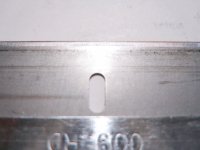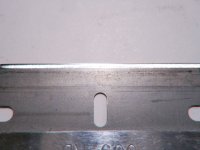Downloaded ImageJ and User Guide, will play with it this weekend!
That's awesome. I'll be curious to hear your thoughts and discoveries! It's way over my head, and I've only managed to figure out how to use scaling, measurement, area, and text notations. That's about .01% of what can do.
I know @Dovo1695 wants to try focus stacking, but this highlights why I recommended backlighting. If you focus on the blade, you can get the most important details for measuring. By backlighting you can define the profile of the razor(like the comparator). Also by putting the razor in shadow, you eliminate glare and resulting artifacts.
I don't know whether focus stacking is the best way to go vs backlit quasi-comparator, but if there are photos involved, ImageJ seems like a great tool for taking measurements of very small things. I definitely think there is merit to the idea of backlighting like a comparator. I'd like to try them both and compare the results.
I'll try anything once. I actually tried putting my razor on my photocopier and took a 600dpi scan a few days ago. My theory was that it would eliminate the optical distortion caused by normal lenses, and give you a perfect, non-distorted image of the full razor profile. It worked great except for the fact that the blade edge was 2mm above the scan plane.
My philosophy is that although I'm more or less an idiot, and I'm wrong 99 times out of hundred, I can get ahead by making more mistakes a day than most people make in a month.
Last edited:










